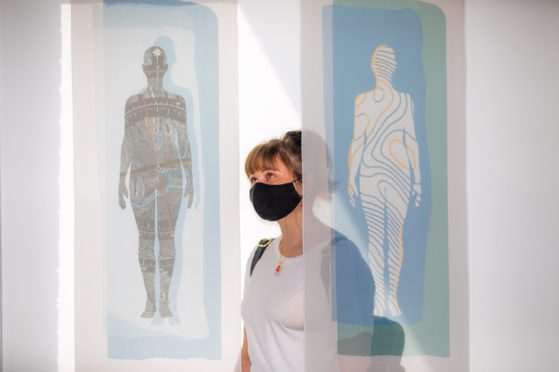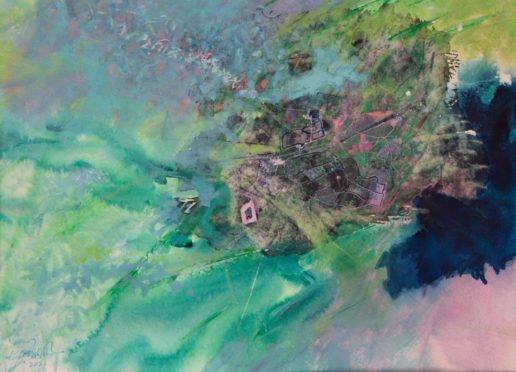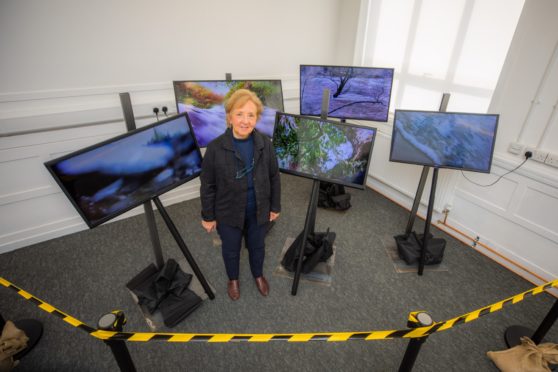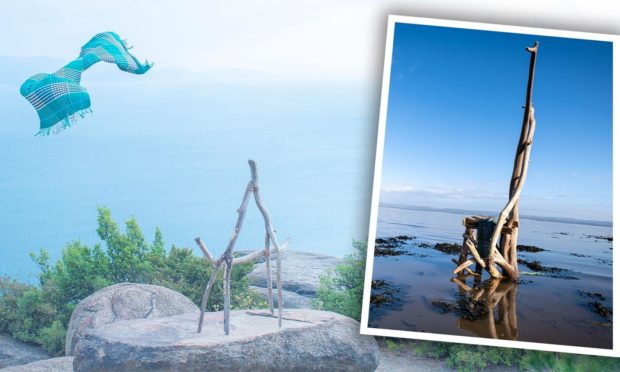Confluence of North, the new exhibition at WASPS Perth Creative Exchange, is an exercise in disaster – and a tribute to the power of human connection.
The exhibition, showing at the WASPS studio from June 8-26, presents the results of a year-long cultural exchange between artists in Scotland and Japan.
But thanks to the pandemic, none of the eight participants actually set foot in the countries they were “exchanging” with.
Instead, Confluence of North was created entirely over Zoom. With global disaster as a backdrop, the four pairs of artists created and collaborated, all while navigating their own miniature disasters.
In fact, between the language barriers, time zone negotiation, tech glitches and postal delays, the exhibition’s existence is a feat in itself.
Lead Scottish artist Su Grierson says: “I hope the artists coming in would get the idea that, partly because of Covid, a new form of connection has become commonplace.
“This Zoom world can allow us to do things we weren’t doing before.”
From Tayside to Tohoku
Although it took place over lockdown, the seeds of the project were sown long before the pandemic, during another global tragedy – the Fukushima disaster of 2011.
Perthshire resident Su visited the Fukushima district of Japan back in 2013, where she worked with refugees of the Tohoku earthquake and nuclear disaster which killed 18,000 people.
At the same time, Japanese artist Maruyama Yoshiko began the Spirit of North project in the northern Tohoku region.
Su explains: “Yoshiko’s aim was to try and regenerate culture and arts after Fukushima.
“It was desperate thing, to see the refugees from that area. And how desperate they themselves were to get back and reconnect with the land that had taken everything away from them.
“I think that was the starting point for how, in this area of Japan which is considered quite remote and northern, people could get that relationship back.
“And then she was communicating with people who lived in other northern areas.”
Northern souls
Embodying the spirit of partnership, a “confluence” is the place where two rivers meet. And Su says the aim of Confluence of North was for the two very different cultures to explore the question: “What is north?”
For some of the artists, the focus was on land, topography, or a sense of home. For Su, it was – in great Scottish tradition – about the weather.
She created a series of short films exploring the ever-changing nature of a flood, called Water Level.
“I live on a farm and every morning of my life, I’ve got up and looked out of the window to see what the weather’s doing,” she says.
“That has been a crucial part of my life. But it’s just, ‘Oh gosh, we’re going to get more flooding’ or ‘They’ve just sown the barley and now it’s raining’.
“I hadn’t really thought about it in terms of the impact of our climate. I’d always looked at it in a really personal way.
“This made me look at it in a wider context.”
But rather than the idea of “north”, Su reckons the heart of the project came from the relationships that grew between the artists.
Friendships growing like… fungus
One particularly strong partnership was that of Fife artist Gillian McFarland and Takizawa Tatsushi, from the Spirit of North project. The pair produced several collaborative works across the year – despite neither of them being fluent in one other’s spoken language.
By using Google translate and exchanging images and recipes, they created a table full of objects which showed the timeline of their conversations, including the exotic (and edible) Cloud Ear fungus.
Su explains: “He sent her these dried fungi which are called Cloud Ear. She liked the idea, the name of ‘cloud ear’ and I think there’s another that’s called ‘wood ear’, so she was working with these ideas of clouds and wood.”
Gillian even crafted a chair out of driftwood she found on the beach near her Balmerino home, after being inspired by a project of Tatsushi’s which involved him climbing to mountain tops with a chair and blanket he’d made.
As well as the eight Confluence artists, the exhibition has taken advantage of its digital nature and expanded to include a series of pre-recorded talks by remote Scottish artists Paul Bloomer, Patricia Shone and Mary Morrison, which will go online alongside the rest of the work.
Visitors can also see a community project by local Cuban artist Yunior Perdomo. His work, Polaris, asks Perth’s first-generation immigrant population how they retain their sense of culture in their new “northern” home.
“North is not a fixed concept,” says Su. “You’re always north of somewhere, and south is always somewhere other than north – they’re relative.
“This project became about connections. And people, not just artists, can all make those kind of connections.”
To find out how to view the exhibition, in person or online, visit the Perth Creative Exchange website.
Related articles:



